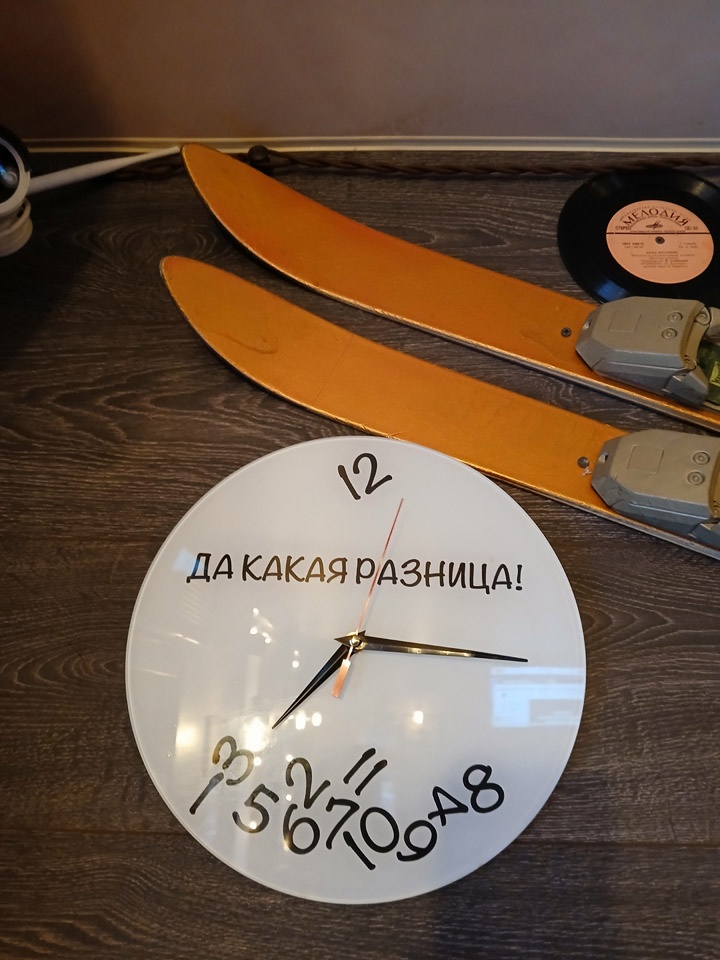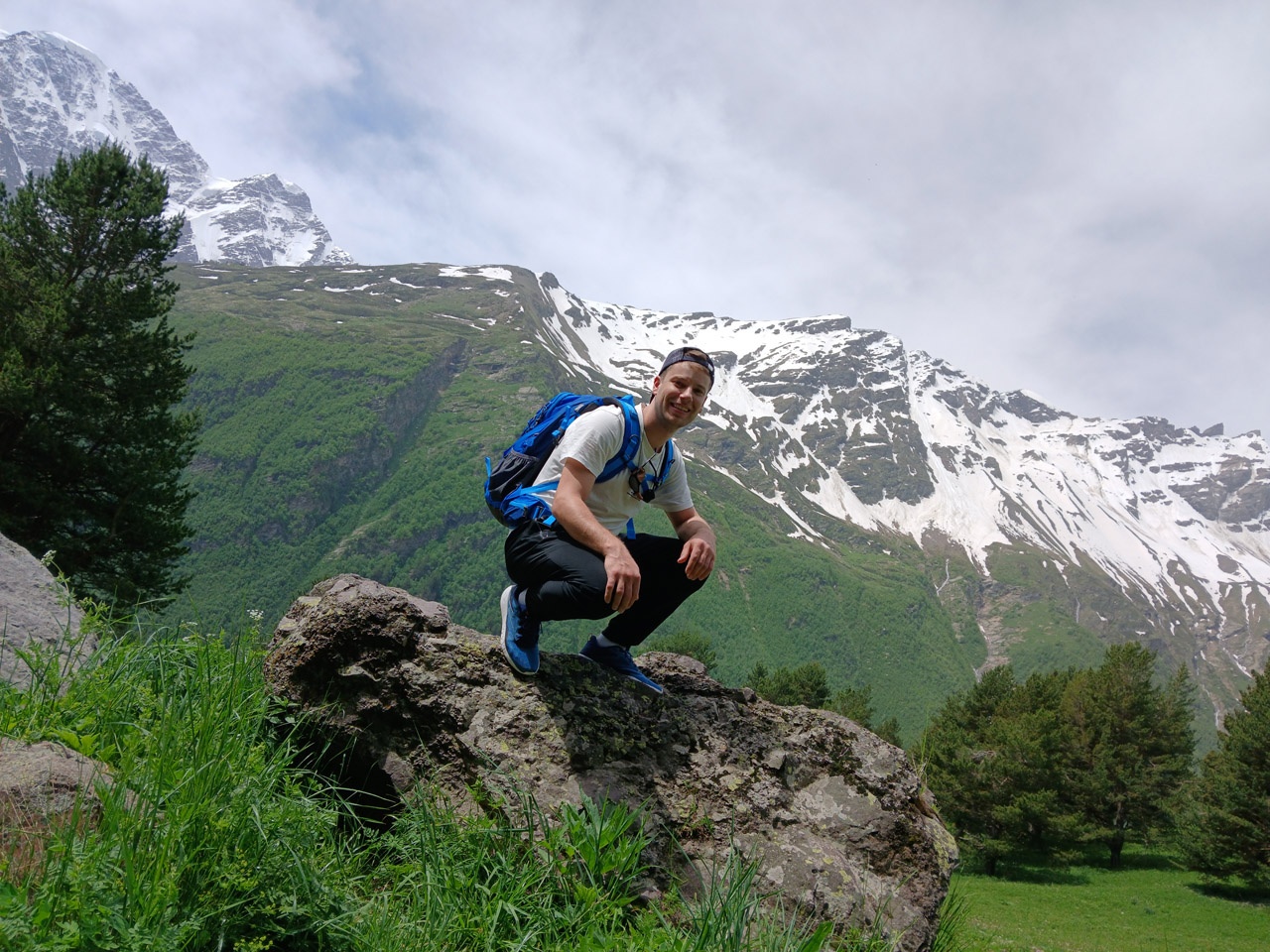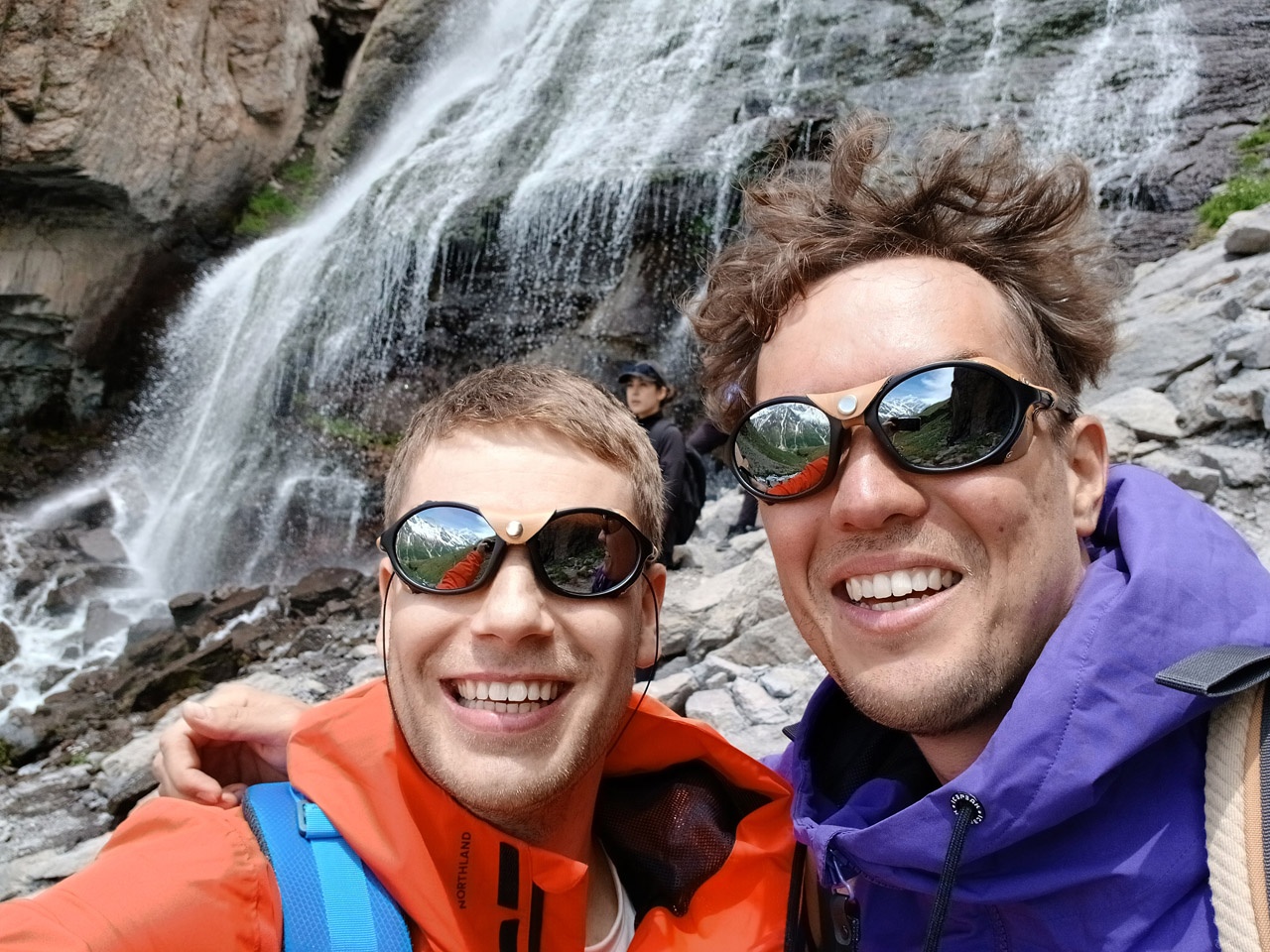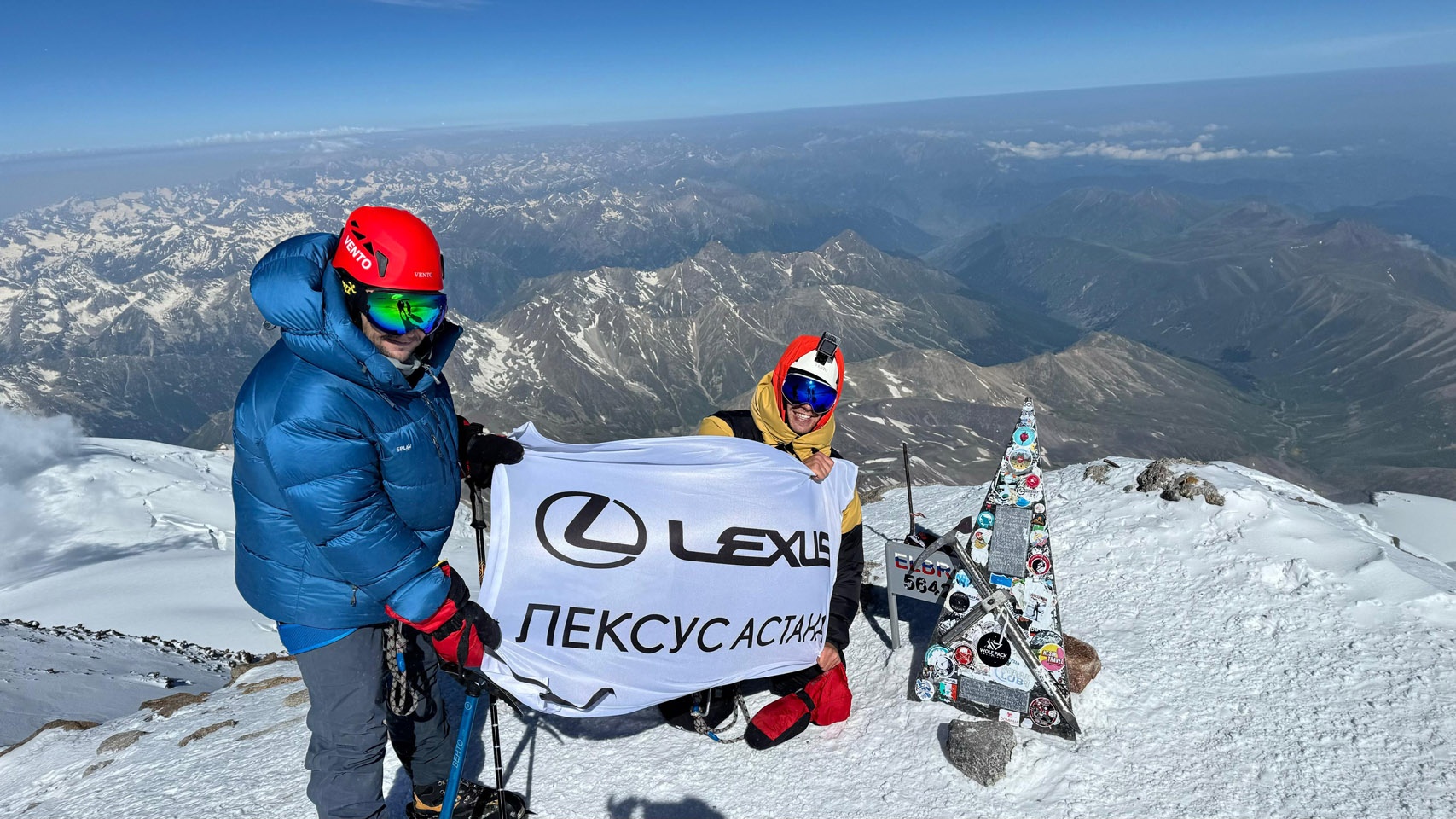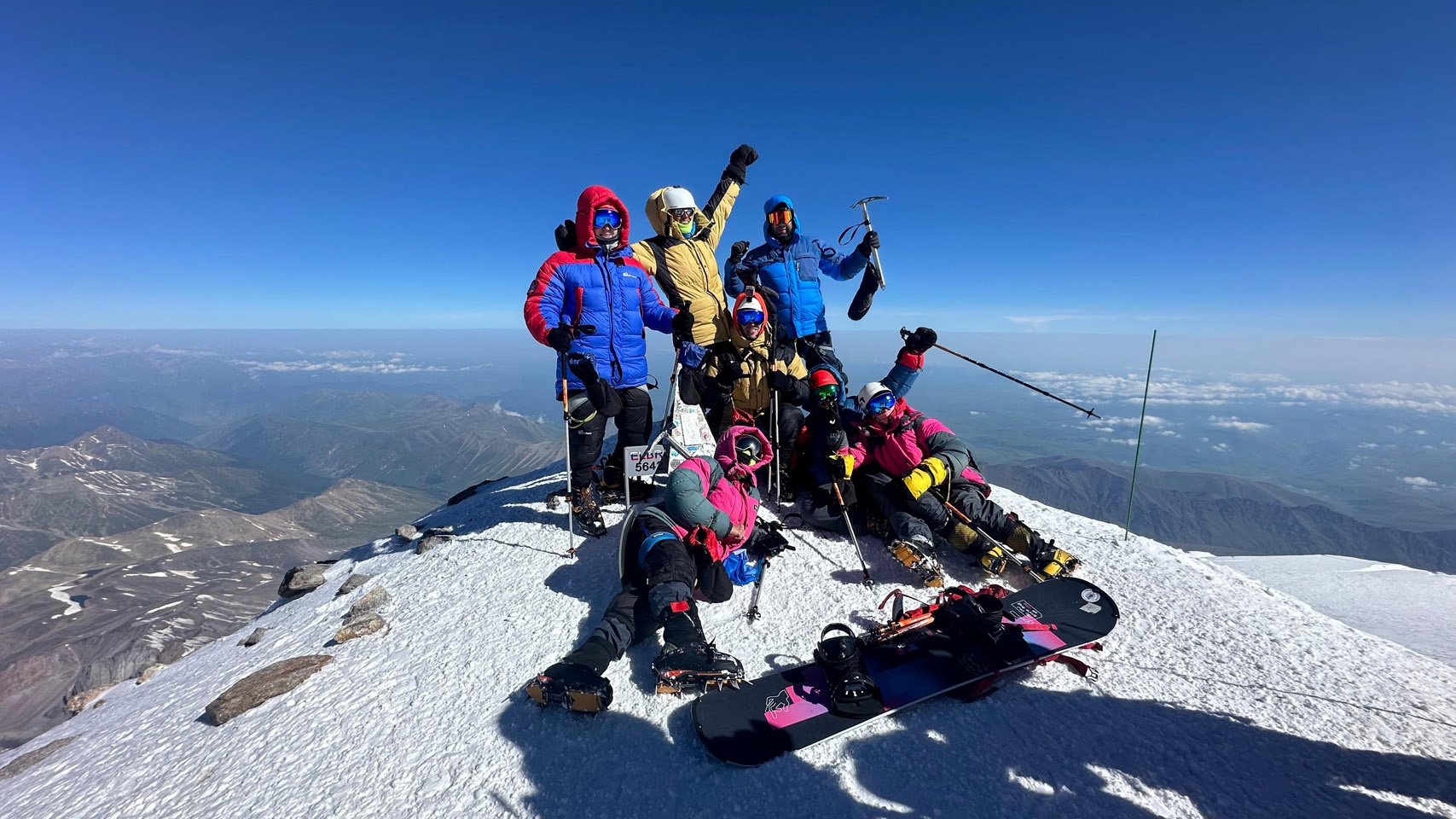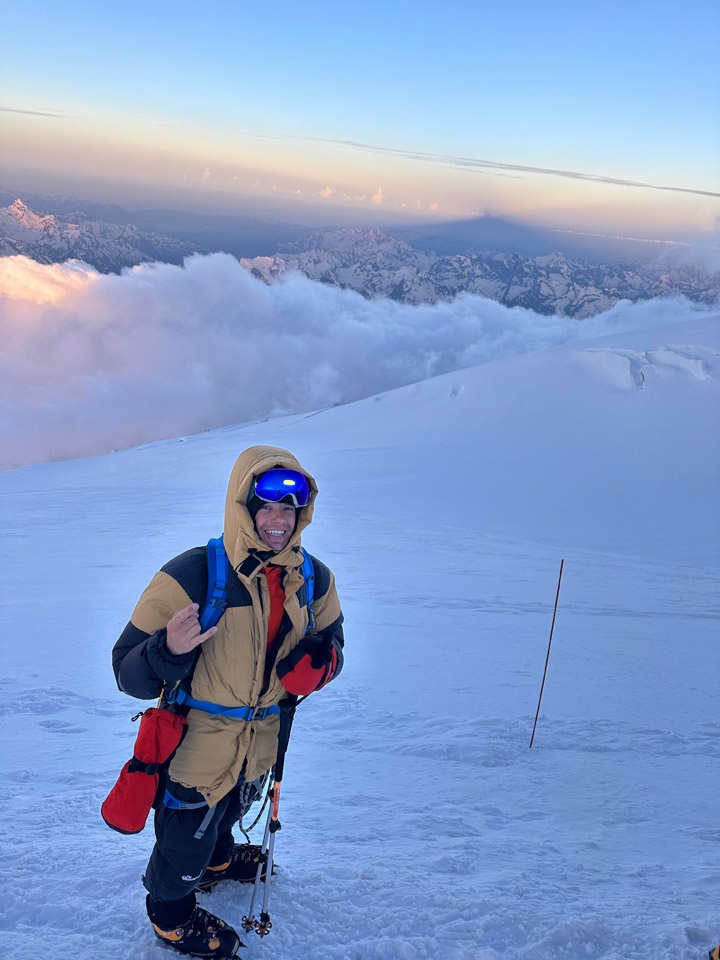LEXUS ASTANA EMPLOYEE CONQUERED ELBRUS
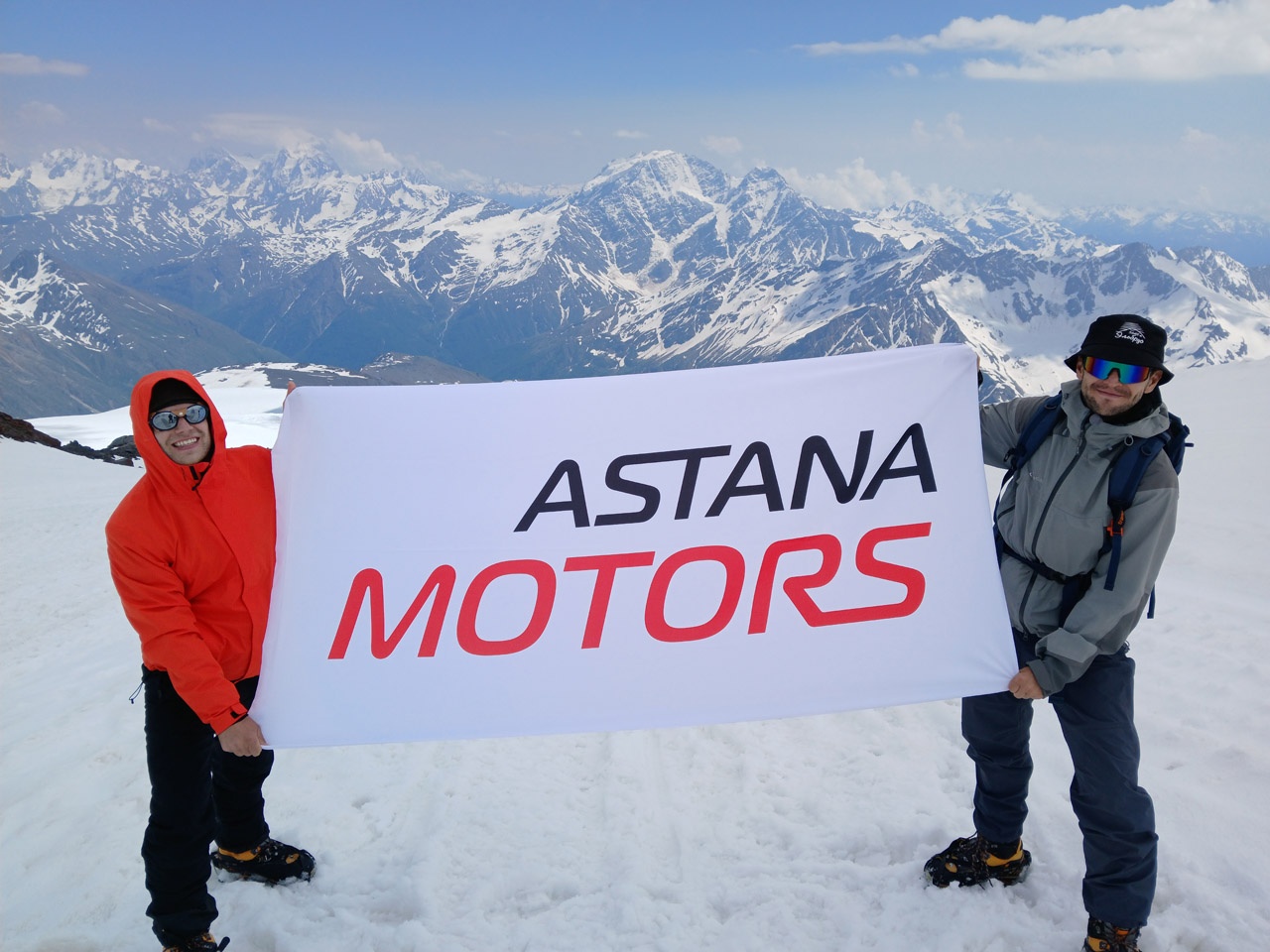
“Mount Elbrus is among the peaks with the freakiest weather; a lot of climbers fail to reach the top...” A year after his rapid ascent to the Peak of the Soviets, an employee of LEXUS ASTANA, ALEXANDER MUSIENKO, climbed yet another mountain peak.
Alexander was sponsored by Astana Motors LLP and the Lexus Astana dealership in climbing one of the world’s most historic mountains. The company is proud of its employees and strongly supports their desire to soar to new heights.
On June 13, 2024, Lexus Astana employee Alexander Musienko, among a team of five, set off on a long and challenging journey to the greatest mountain in Europe and Russia – Elbrus. The first acquaintance and team building began as soon as they met at the Astana airport. Climbers say that if two people fail on their route to the top of a mountain, the whole team will fail. That is why it matters a lot to know who is on your team to achieve your common cherished goal. A family of travelers – Vladimir and Valentina, Alexander’s future roommate – Ruslan and a solo climber – Gulnara flew off to Mineralnye Vody. Gulnara would help Alexander out of a difficulty during the ascent, which we will tell about later on.
The climbers got their first acclimatization as they arrived at Mineralnye Vody. After the cool weather with a maximum of +15 degrees in Astana, there was a sharp difference in temperature – a scorching +35 degrees. They could hardly believe that they would soon get somewhere with a temperature below -10 degrees and heaps of snow all around.
The hotel was located at a height of 2200 meters above sea level. The next morning, the climbers were to take acclimatization trips to the Maiden’s Braids waterfall (2800 m) and the Terskol observatory (3100 m).
Alexander shared the story of their expedition.
You get a big problem here if you get sick with the so-called “mountain sickness.” An essential point on such hikes is to have the right clothes, since the weather in this area is unpredictable. Take windproof pants, a fleece sweater, a membrane jacket, a cap, a gaiter (scarf) or hat, waterproof high-soled sneakers, a high SPF cream, which is a must, corn plasters – and you are ready to start. The food on the route includes nourishing walnuts, dried apricots, chocolate, water, and even cola. The point is that at high altitudes, the constant muscular exercise quickly depletes your carbohydrate reserves. They need to be replenished right on the route with sugar or glucose. It is best to eat sugar in small portions throughout the day. Each time, this delays the onset of fatigue by up to an hour and a half.
The team faced their first serious tests on the second day. The road to the Terskol waterfall at 2800 meters turned out to be more difficult than the team expected. They were unable to start off as scheduled because of heavy rain and bad weather. Alexander liked the wet weather, fresh damp air, and a bright green blooming oasis in the rain, but his teammates got nervous. By lunchtime, the next height was reached. Acclimatization was successful, but on the way to the camp, Alexander’s knee began to hurt.
“At first, the pain was somewhere far away, not so strong and not nagging. It felt more like some discomfort, but over time, I tried to step more gently on this leg, leaning on the trekking poles, and continued to walk silently so as not to let my team down,” Alexander said. It was at that time that Gulnara helped him out by offering elastic knee sleeves to bandage his sore leg. And so it saved the climber from failure.
On the third day, as the team came closer to the coveted peak, the conditions got very tough. They stopped over in a camp at a height of 3800 meters. The guide told the team about the rules for using “crampons” (metal gear for better slip resistance). The crampons have 5 cm spikes, and there are eight ones on each sole. The camp and the intermediate station before it were full of incredible vibes, with climbers from across the world taking pictures with each other, snowboarders who came to ride on the slopes of Elbrus flaunting their colorful boards, and driving music and Caucasian dances all over the place. On that day, the team’s goal was “the Eleven’s Shelter” at 4050 m. On the way to it, the climbers struggled with sweltering heat, perspiration that couldn’t be combated even with a special cream, and high-altitude shoes with “crampons” weighing 7 kilograms. Here Alexander proudly stretched the LEXUS ASTANA flag against the backdrop of the majestic Caucasus mountains for the first time.
The climbers returned to their base camp. They would have a day off, meet local guides and learn to work with fixed ropes, bands, carabiners, ice axes, and other equipment. The weather was getting worse, the sky got covered with thick heavy clouds, and the night got colder. A blizzard and piercing cold wind were raging outside. The local guide reassured the team that the weather was favorable on the day of the ascent. “I even put on my jacket in bed.” We went to bed and again though about what if we wouldn’t make it... We were high in the mountains, in a container with the team, it was night, and outside the wind was raging like a storm,” Alexander recalled.
Day X came.
The alarm clock’s ringing pierced the silence on June 20 at exactly 12:00 a.m. The team jumped up from the very first ring. There was excitement in the air. Everything was important on that day. The team had a hearty breakfast, drank tea with sugar, took water thermoses with them and ran an equipment check. There was a commotion in the camp. Climbers left the camp 15 minutes late. Will this time play a cruel joke on the conquerors of the peaks? They begin climbing up. The guide walks in front of the team, followed by brave girls, men, and a trailing guide. This is done so that those walking quickly do not rush those lagging behind. Climbing is easy at the beginning. Alexander’s team meets the sunrise at 4:15 a.m. at 5100 meters. Elbrus is a long-dormant volcano, a peak that has a twin brother and they stand side by side. They appear as two identical peaks, the eastern one at 5621 meters and the western one, Elbrus, at 5642 meters.
At an altitude of 5100 meters, some team members begin to feel badly sick.
“High up, I feel a lack of oxygen, and my head begins to ache and throb. After a mug of tea, I feel sick and tell the guide about my condition, and he says that I have a mountain sickness,” Alexander Musienko said.
The climbers have 15-minute rest and go on upward slowly but surely. The slope gets steeper towards the top. Climbers are strictly forbidden to sit down during the final part of the route. The slope is so steep that if someone tries to sit down, they will fall straight into the abyss. This part is called the "Slant Shelf,” which is absolutely true.
“The sun is shining brighter, the mountain sickness is getting worse and worse, and it’s getting hot. This part of the route was the most difficult to me; it took a lot of effort – and it’s over,” Alexander recalls his feelings.
The dream is closer, but there are still more than 500 meters left to reach it and the time on this path lasts forever. Having completed the “zombie trail,” the summiteers, exhausted but happy, arrived at their long-awaited goal.
“I started counting my steps. One, two, three, five, seven, twelve, and the guide congratulates me: the goal has been reached. I am an ordinary person, a dreamer who sets goals for himself, transforms them into dreams, and goes towards them no matter what,” concludes Alexander.
At the top, among the endless blue sky, Alexander Musienko installed the flag of his favorite company he works for.
“Thanks to my work, I have promising opportunities, opportunities to fulfill my plans. I love my job and what I do for it,” continues Alexander expressing gratitude for the sponsorship of his unforgettable journey to Elbrus.
P.S. Conquering any peak and climbing a mountain, regardless of height, is in itself a tough test for the body. Don’t think that the worst is over, as most accidents happen on the descent. The descent can be as difficult as the ascent. You need to be extremely careful and should not relax, as experienced climbers advise.

